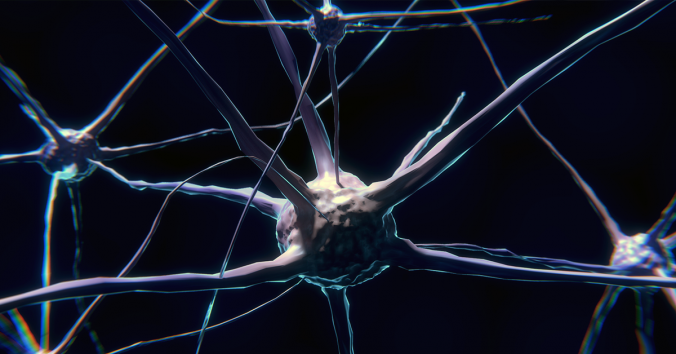 To most of us, it is self-evident that we, as human beings and societies, should care about the environment and climate change. Greta Thunberg has, in a remarkable way, spurred political interest and engagement in climate change. This effort has affected our thoughts and emotions concerning environmental policy. However, when we dig deeper into the philosophical debate, there are different ideas on why we should care about the environment. That is, even though we agree on the need to care, there are various arguments as to why and how we should do that.
To most of us, it is self-evident that we, as human beings and societies, should care about the environment and climate change. Greta Thunberg has, in a remarkable way, spurred political interest and engagement in climate change. This effort has affected our thoughts and emotions concerning environmental policy. However, when we dig deeper into the philosophical debate, there are different ideas on why we should care about the environment. That is, even though we agree on the need to care, there are various arguments as to why and how we should do that.
First, some scholars argue that we should care about nature because we need it and what we get from it. Nature is crucial to us, for example, because it provides us with water and food as well as air to breathe. Without nature and a good climate, we simply cannot live on planet Earth. Unless we make a substantial effort, our lifestyle will lead to flooding, unmanageable migration and many other enormous challenges. Furthermore, it will affect poorer people and poorer regions the most, making it a crucial issue of justice.
Second, some philosophers argue that it is wrong to base our concern for nature and the environment on the needs of, and effects on, human beings. The anthropocentric assumptions are wrong, they argue. Even without human beings, nature has a value. Its value is intrinsic and not merely instrumental. Proponents of this view often claim that animals have values, and possibly even rights, that should be protected. They disagree on whether it is individual animals, species or even ecosystems that should be protected.
Environmental philosophy consists of many different theoretical schools, and the notions they defend underlie societal debate, explicitly or merely implicitly. Some notions are based on consequentialist ethics and others on deontological ethics. In addition to these two schools of thought, virtue ethics has become influential in the philosophical debate.
Environmental Virtue Ethics holds that it is inadequate to focus on consequences, duties and rights. Furthermore, it is inadequate to focus on rules and legislation. Our respect for and reverence for nature is based on the virtues we ought to develop as human beings. In addition, society should encourage such virtues. Virtue ethics focuses on the character traits, on the dispositions to act, and on the attitudes and emotions that are relevant to a certain area, in this case the environment. It is a richer, more complex theory than the other two mentioned. Even though virtues were first discussed during Antiquity, and the concept might seem obsolete, they are highly relevant in our time. Through reflection, experience and role models, we can all develop virtues crucial to environmental protection and sustainability. The idea is not only that society needs these virtuous people, but that virtuous human beings blossom as individuals when they develop these virtues. They argue that it is wrong to see nature as a commodity belonging to us. Instead, it is argued, we are part of nature and have a special relationship with it. This relationship should be the focus of the debate.
Whereas Environmental Virtue Ethics focuses on ethical virtues, that is, how we should relate to nature through our development into virtuous individuals, a related school of thought focuses on the aesthetical value of nature. It is pointed out that not only does nature have ethical value, but an aesthetical value in virtue of its beauty. We should spend time in nature in order to fully appreciate its aesthetical value.
All of the mentioned schools of thought agree that we should care about the environment and climate. They also hold that sustainability is an important national and global goal. Interestingly, what is beneficial from a sustainability perspective is not necessarily beneficial to climate changes. For instance, nuclear energy could be considered good for climate change due to its marginal emissions, but it is doubtful that it is good for sustainability considering the problems of nuclear waste.
Finally, it is important to include the discussion of moral responsibility. If we agree that it is crucial to save the environment, then the question arises who should take responsibility for materializing this goal. One could argue that individuals bear a personal responsibility to, for example, reduce consumption and use sustainable transportation. However, one could also argue that the greatest share of responsibility should be taken by political institutions, primarily states. In addition, a great share of responsibility might be ascribed to private actors and industries.
We could also ask whether, and to what extent, responsibility is about blame for past events, for example, the western world causing too much carbon emissions in the past. Alternatively, we could focus on what needs to be done now, regardless of causation and blame. According to this line of thinking, the most important question to ask is who has the resources and capacity to make the necessary changes. The questions of responsibility could be conceptualized as questions of individual versus collective responsibility and backward-looking versus forward-looking responsibility.
As we can see, there are many philosophically interesting aspects and discussions concerning the question why we should care about the environment. Hopefully, these discussions can contribute to making the challenges more comprehensible and manageable. Ideally, they can assist in the tremendous work done by Greta Thunberg and others like her so that it can lead to agreement on what needs to be done by individuals, nations and the world.
Jessica Nihlén Fahlquist
Nihlén Fahlquist, J. 2018. Moral Responsibility and Risk in Modern Society – Examples from emerging technologies, public health and environment. Routledge Earth Scan Risk in Society series: London.
Van de Poel, I. Nihlén Fahlquist, J, Doorn, N., Zwart, S, Royakkers L, di Lima, T. 2011. The problem of many hands: climate change as an example. Science and Engineering Ethics.
Nihlen Fahlquist J. 2009. Moral responsibility for environmental problems – individual or institutional? Journal of Agricultural and Environmental Ethics, Volume 22(2), pp. 109-124.
This post in Swedish









